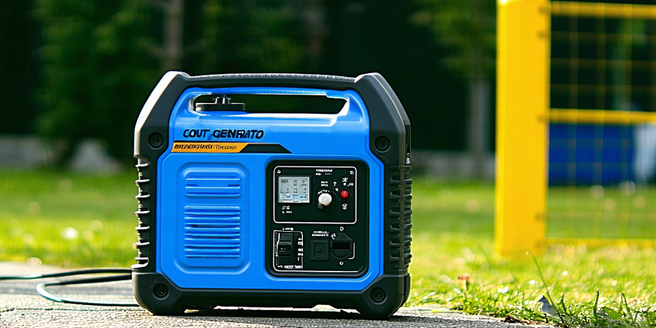
Understanding Generator Hazards
Portable generators pose specific hazards that can endanger users if not handled properly. Carbon monoxide poisoning is a primary risk, as these machines emit this toxic gas. Generators should never be used indoors or in enclosed spaces to avoid potential exposure. Electrocution is another danger, particularly if generators are used in wet conditions or improperly connected to a home’s electrical system. It’s crucial to maintain a safe distance from water sources and to use ground fault circuit interrupter (GFCI) protected outlets. Additionally, overheating and mechanical failures can lead to fires or explosions. Regular inspections, maintenance routines, and adherence to manufacturer guidelines significantly diminish these risks. As with any powerful equipment, understanding and respecting the inherent dangers of portable generators will ensure safer usage and peace of mind.
Proper Setup and Installation
Setting up a portable generator involves more than just plugging in devices. To begin with, choosing the right location is crucial. Generators should be placed outdoors, away from open windows, doors, or vents to prevent exhaust gases from entering the home. A flat, dry surface is essential to ensure stability and minimize fire hazards. For installation, it’s advised to create a dedicated space with proper weather protection, using tents or covers made for generators. This ensures functionality even during inclement weather, without compromising safety. It’s also important to read the manufacturer’s instructions thoroughly, which include specific setup configurations. Extension cords used must be rated for outdoor use and have enough capacity to handle the load. By understanding these installation nuances, users can maximize efficiency and minimize risks associated with generator use.
Ventilation and Exhaust Safety
Proper ventilation is critical when operating a portable generator due to the emission of harmful carbon monoxide (CO). Always place generators outdoors in a well-ventilated area, maintaining a safe distance from windows, doors, and vents to prevent CO from entering indoor spaces. The exhaust should be directed away from inhabited areas, allowing harmful gases to dissipate safely. Under no circumstance should a generator be used inside homes, garages, or partially enclosed spaces, even with open doors or windows, as CO can accumulate rapidly. Installing battery-operated CO detectors inside the home provides an added layer of safety by alerting inhabitants of rising CO levels. Failing to adhere to ventilation guidelines not only compromises personal safety but may lead to fatal consequences. Awareness and cautious placement are vital in ensuring that ventilation needs are properly managed.
Handling Fuel Safely
Fueling a portable generator requires careful attention due to the flammable nature of gasoline. Start by storing fuel in approved containers, away from living areas, and never in the generator itself. Gasoline should be kept in a cool, dry place, away from any potential ignition sources. When refueling, ensure that the generator is turned off and completely cool to prevent accidental ignition of vapors. Spills should be cleaned immediately with appropriate materials, not allowing fuel to linger in the environment. Properly sealing fuel containers after use reduces the risk of spills and minimizes vapor emissions. Only purchase the amount of fuel necessary for planned use and regularly check storage containers for leaks or damage. By adhering to these guidelines, users can ensure a safe environment and prolong the operational efficiency of their generator.
Electrical Cord and Device Safety
Using extension cords safely with a portable generator is vital to reducing electrical hazards. Always opt for cords that are heavy-duty, outdoor-rated, and can handle the generator’s output capacity to prevent overheating. Confirm that cords have no visible damage such as cuts or frays before use. Electrical devices should be connected directly to the generator’s outlets, maintaining a dry environment to avoid shocks or short circuits. Never plug a generator directly into a standard household wall outlet, as this can lead to backfeeding, posing risks to utility workers and damaging home wiring. It’s advisable to use transfer switches professionally installed for an integrated connection. By following these precautions, the risk of electrical accidents can be significantly minimized, protecting both the user and the electrical devices connected.
Maintenance and Storage Tips
Regular maintenance and proper storage of portable generators are key to ensuring reliable performance and safety. Initiating a maintenance schedule post-purchase is highly recommended. This includes regular oil changes, filter inspections, and testing to confirm operational status. It’s crucial to conduct pre- and post-use checks to identify any worn or damaged components. For storage, generators should be kept clean and dry to prevent rust and deterioration. Before storing for extended periods, fuel should be drained or stabilized to prevent gum deposits. Consult the manufacturer’s specific maintenance guidelines, as they may vary between models. Storing in a cool, dry location extends the life of the equipment, while periodic start-ups during storage periods ensure it remains operational. Consistent care ensures that the generator will be functional and safe to use when needed.
